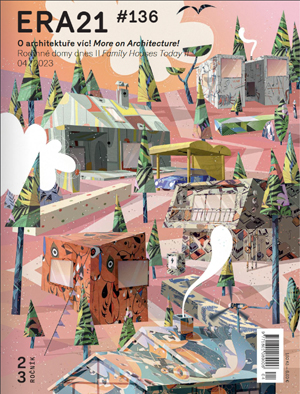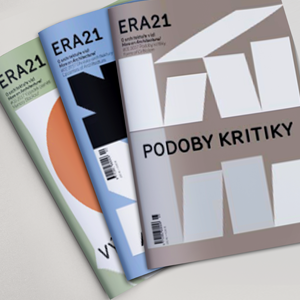The transformation of a former cemetery into a park with a children’s playground sees a half-forgotten garden become a site of active rest for all generations. The design works with three basic principles – activating the park boundary, allowing free movement inside, and introducing new additions to the existing structures. Additional planting creates an extension of the zigzag tree arrangement of the original alley into the diagonal tree grid across the whole area of the park. Keeping a gap around the root system of the trees, the entire area was stabilized with a walkable gravel surface, thus relieving the only existing communication axis. The historical layer of the original cemetery structures was preserved. A team comprised of an architect, a landscape architect and an artist was behind this winning proposal.
» entire articleThe strong local glassmaking tradition is reflected both in the work and design by Lasvit and in the architecture. Joining all the buildings together into one functional unit, the new design brings a contemporary interpretation of the typical two‑story glass maker's house. Two new abstractly shaped volumes with rectangular plans and gabled roofs were added next to the original protected 19th century houses. The glass building replaces a corridor that used to connect both historical houses, inside there is an office café, conference room, and sample library. The black building, at the back of the site, contains a three-story open space for the testing and presentation of 1:1 samples, glass objects which can weigh up to five tons.
» entire articleWater has gradually disappeared from the Czech landscape over the course of the 20th century. The demands of industrial society and the ideas of unlimited progress and control of nature have water entrapped in the infrastructural networks. Streams and rivers have turned into distribution channels, reinforced and straightened, and water in large reservoirs has been used to feed the growth of national economy. It’s important to appreciate, however, that this process wasn’t a result of engineering ignorance or destructive political ideology. The efforts to control water, which led to the changes of the water regime in Czechia in the 20th century, were based on a general societal consensus.
» entire articleWhile a small and feisty Swedish schoolgirl sails across the Atlantic to scold the American president, those climate and climate-related issues she’s concerned with are becoming an important topic locally, here in Czechia. A friend of mine, an IT specialist, recently asked me what he, as a passive owner of some agricultural land inherited from his ancestors and returned to him in restitution, could do to fight drought. I was surprised. For me as an expert, the disappearance of water from the landscape has been an issue for a long time. I got used to regular floods, to the permanent degradation of a large portion of Czech fields by erosion. I added drought to this list of challenges I had to get used to in the last couple of years...
» entire articleLiam Young calls himself a techno-optimist and a speculative architect. In an interview with Irena Hradecká he reveals what this position means and what kind of influence digital technology, artificial intelligence or social media has on architecture and our environment in general.
» entire article

ERA21 vydává ERA Média, s. r. o. |
|
|
Phone: +420 530 500 801 E-mail: redakce@era21.cz |
|
| WEBdesign Kangaroo group, a.s. |